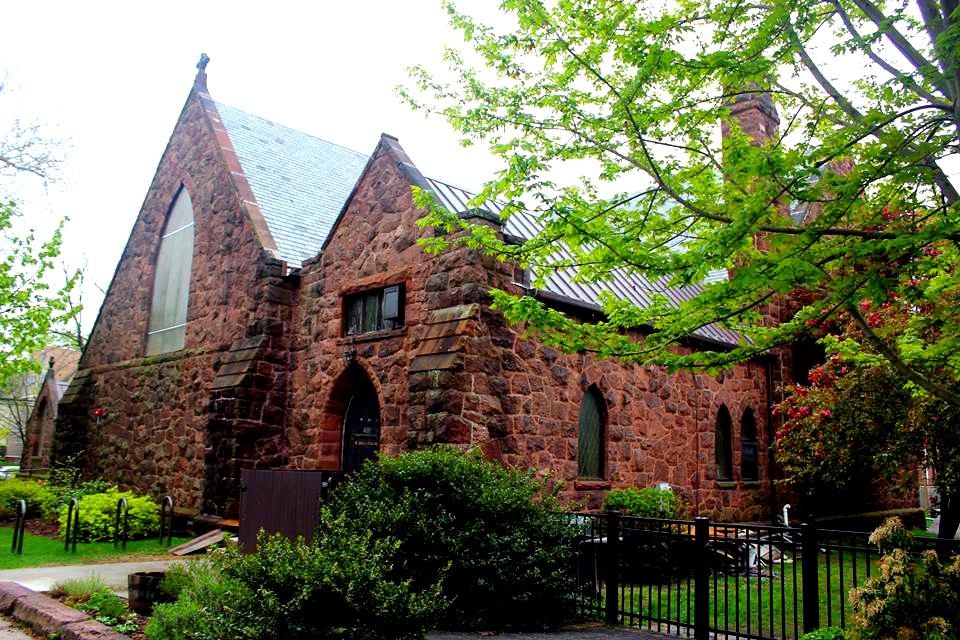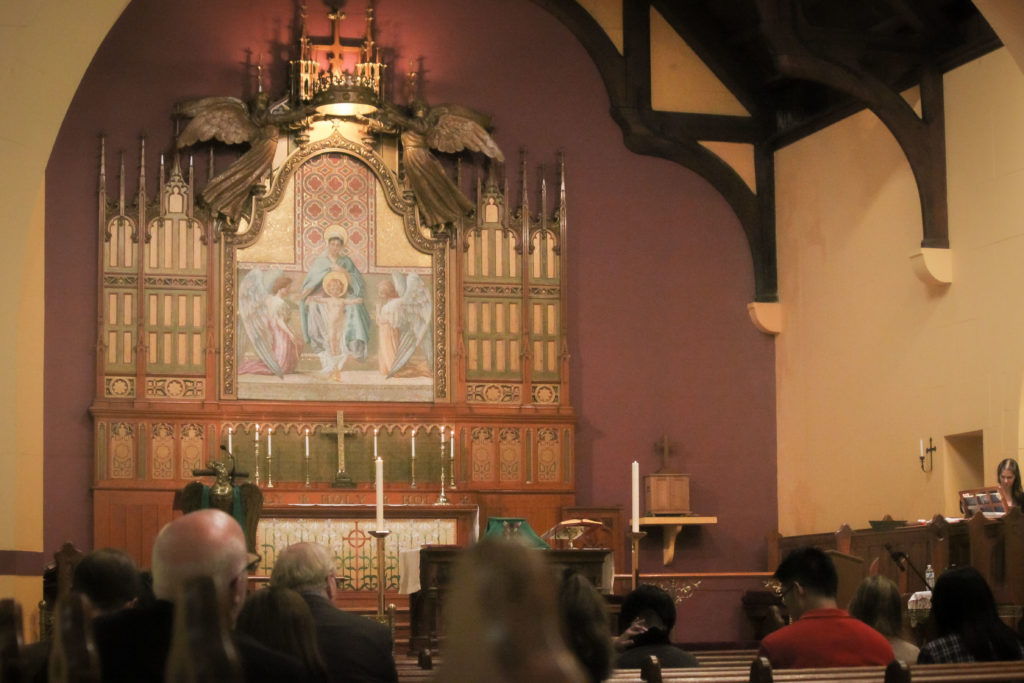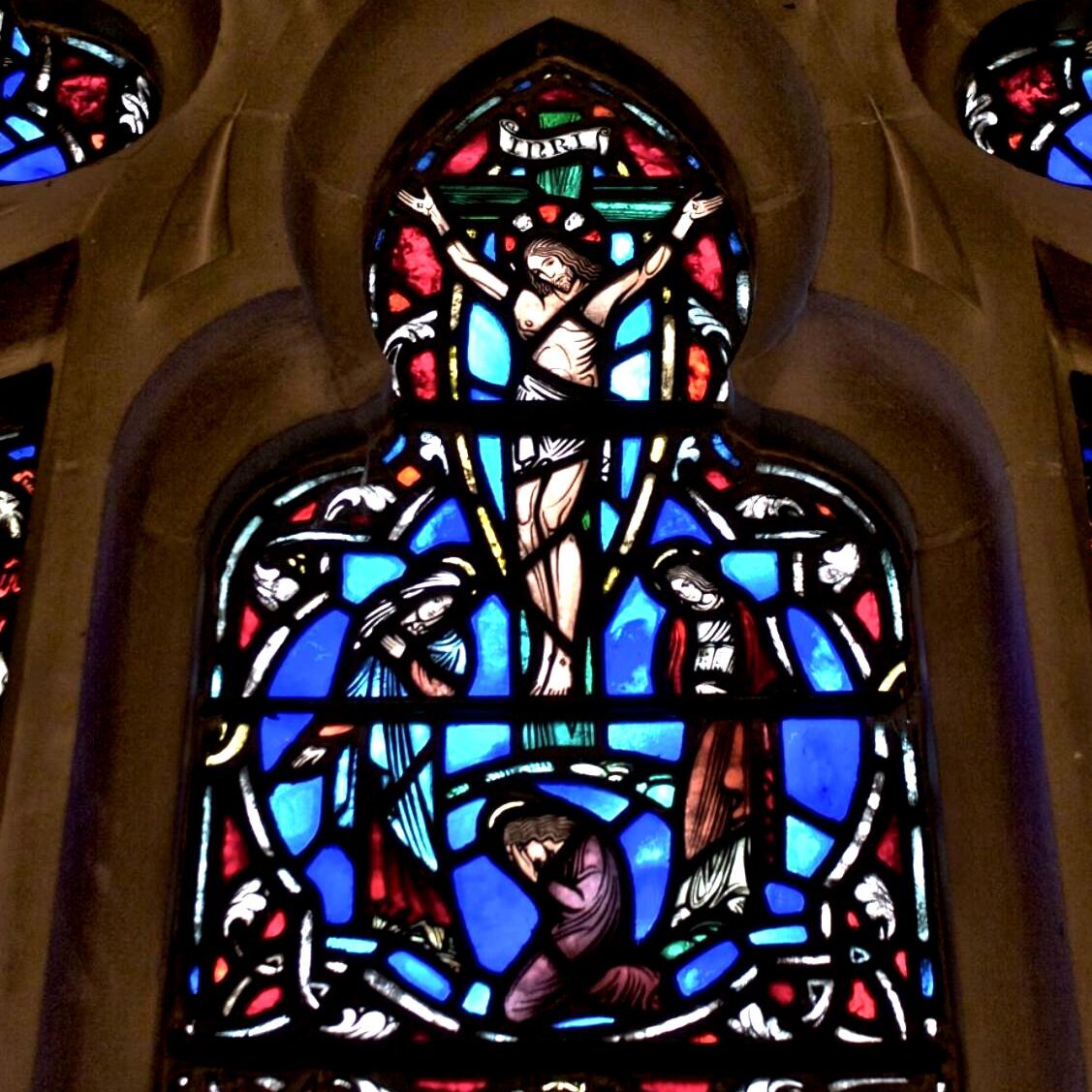History of St. John’s Episcopal Church
St. John’s was originally a Sunday School establishment of another parish called St. Paul’s, which in the 1840s saw the need to accommodate the needs of its body of parishioners who were geographically far from the parish. For this reason, our original location was on the corner of State and Elm Streets. In 1852, St. John’s Episcopal Church was founded. Founded with the mission to reach out to the growing New Haven population, St. John’s quickly established itself as a thriving community. To accommodate the fast growing church, the church moved to its current location on Orange and Humphrey Streets in 1895.
Located in the heart of East Rock, a New Haven neighborhood, and blocks from Yale University, St. John’s has always had strong ties to the Yale community, including Yale Divinity School and its Episcopal Seminary, Berkeley Divinity School. Several of our rectors have come from Berkeley Divinity School, and many of its students have joined us as parish members as well as ministry interns.
Though a historic New Haven landmark, St. John’s building and grounds are anything but static. Recent years have seen the addition of an undercroft with classrooms and offices, a renovated kitchen, and new play equipment. The most striking addition to St. John’s were our stained-glass windows, pictured below, which were installed in the early 20th century.


Stained-Glass Windows

Virtual Stained Glass Tour
This window depicts the story of Jesus’ encounter with Mary and Martha at Bethany. The window, crafted in 1909, is from the studio of Charles Eamer Kempe, perhaps the greatest London stained glass merchant at the turn of the century. His glass in found in many English cathedrals. Note the wheat sheaf and castle in the lower left. This was Charles Eamer Kempe’s unique signature. The text is from Luke 10:38–44 (a delicious set of textual variants in verse 42). In the story, Martha is busy, while Mary is contemplative. One is serving, the other learning. This is our “welcome window” because whether you come to St. John’s busy or quiet, serving or learning—however you come, you are welcome.
Chapel : The large north window in the chapel, which has been called the most beautiful stained glass window in New Haven, is the work of noted Boston artist Charles Connick, signed and dated 1933. Connick copied the motifs and colors of the famous mid-twelfth century Abbot Suger. Our window should be read from bottom to top and from left to right. Each frame depicts a scene from the life of Christ: the Annunciation, the Nativity, the Presentation, the flight into Egypt, Christ’s baptism, temptation, the raising of Jairus’ daughter, the Transfiguration, the Triumphal Entry into Jerusalem, the Crucifixion, the Exaltation. Note the double-edged sword proceeding from Christ’s mouth (“The Word of God is living and active, sharper than any double-edged sword”—Hebrews 4:12), as well as the seven stars and seven lampstands for the seven churches of Revelation 2–3. In the smaller rosettes, we see St. Peter with the keys to the kingdom and St. Paul with the sword of the spirit. Crammed into the jam spaces are the symbols of the four evangelists: Matthew, Mark, Luke, and John. The two crests depict a pelican striking her breast to feed her young and a phoenix arising from the flames—symbols of the death and resurrection our Lord Jesus Christ. Note the sparseness of the pictures on the one hand and the splendid details (the anchor, the green cross, etc.) on the other. There are many ways to read this window. One way is to read up the center panels: “She brought forth her firstborn son,” “Thou art my beloved son,” “This is my beloved son . . . listen to him,” “Woman, behold thy son,” “We have a great High Priest who has passed through the heavens, Jesus, the Son of God.” The western lancet windows depicts David playing the harp and John on the Isle of Patmos, while the eastern lancet window illustrates Moses throwing down the tablets and Stephen being stoned. Atop each is an angel.
The Great Window: The great window allows light to flow into the channel in a great variety of colors. Now turn around and notice the same colors and a few others in the little rose window way in the back in the tower. The many colors remind us of St. Peter’s description of the gifts God gives to his church, the “multicolored grace of God” (1 Peter 4:10).
The Reredos: The Reredos, or altar mosaic, is included in the tour. Imported from Europe at the turn of the century, it depicts the infant Jesus and his mother. Note how the child’s posture is cruciform. He is clearly a human baby, but one to whom incense is offered and whom angels worship. We believe that Jesus is both fully God and fully human.
Baptistery Window: The baptistery window depicts Christ as the light of the world. It is a picture of Jesus from Revelation 3:20, standing at the door of the heart and wanting to come in. This is a copy of the famous window by the Pre-Raphaelite Holman Hunt, one of which is in St. Paul’s Cathedral, London, and the other in Keble College, Oxford. Note that there is no handle on the door, and vines are growing on it—it may not have been opened in a while. Jesus is patiently knocking at the door of your life. The next step is for you to open the door and invite him in.
The St. John window depicts the saint in full liturgical dress (including the yellow patch!). He holds the communion cup in one hand, the Bible in the other. At St. John’s we believe in the unity and balance of the word and sacraments. Some churches emphasize the one and neglect the other. We emphasize both; as Bishop John Jewel the Reformation Bishop of Salisbury (1522–1571) said, “In the word of God I hear the promises, in the sacraments I see them.” The two Tiffany windows depicting Jesus and the Angel are the work of Louis Comfort Tiffany, who pioneered the use of opalescent glass. Note how the light and shades of the clothing and the backgrounds are formed by the shape and thickness of the glass. Only the faces and hands are painted. There is a pervading sense of peacefulness in these windows.
